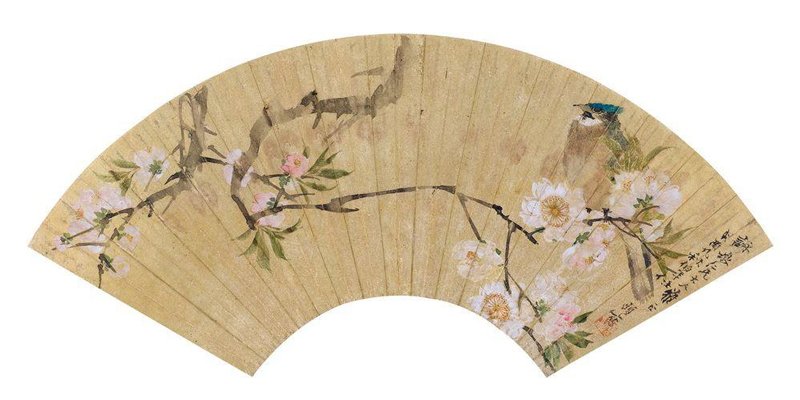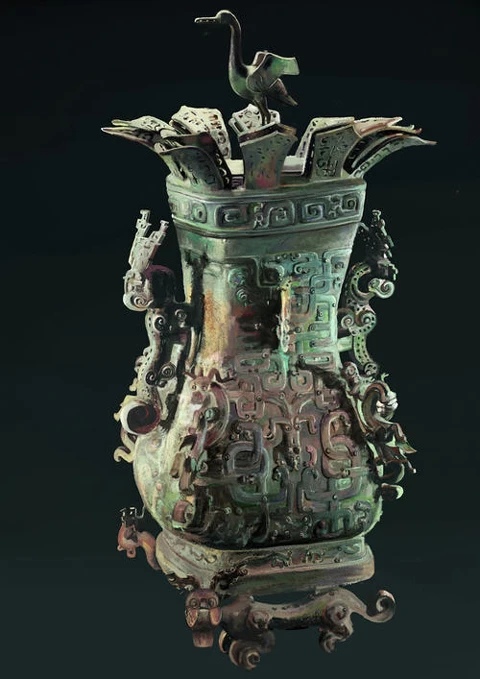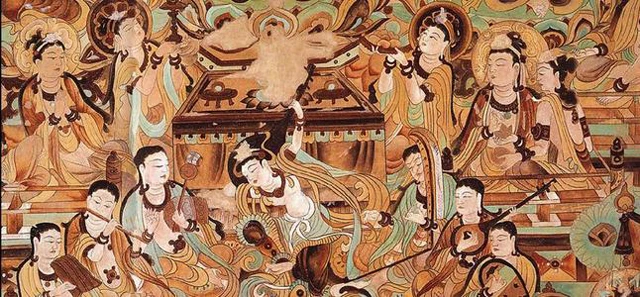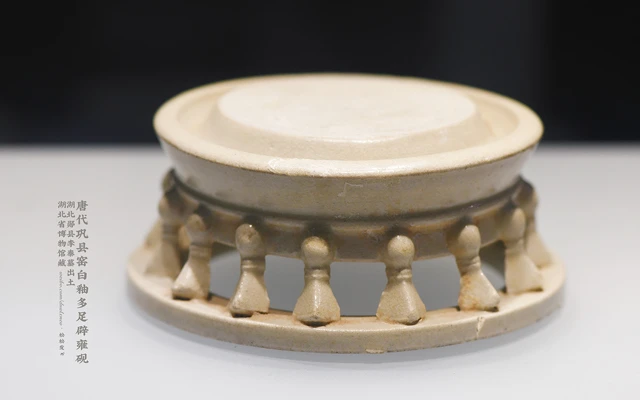When we talk about Chinese art, we refer to all the art produced during millennia by the Chinese civilization, which throughout the centuries remained isolated from the rest of the cultures. Because of this isolation, its style, its way of understanding art, underwent very few changes from antiquity to the 20th century.
From the beginning of Chinese history, the main materials and one of the essential beginnings of this art were unknowingly created. These materials are jade and bronze. Furthermore, with these materials and the technical knowledge of this culture, the artistic forms characteristic of this type of art were gradually characterized.
However, the works made in this type of art were decorated depending on the social hierarchy in which the artist was, and with this different theory of Chinese art were created, these theories are Confucianism and Taoism. In the field of arts, Chinese art stood out, not only in architecture and sculpture, but porcelain and silk, both used to manufacture sumptuary items.
Another type of art, which we could include within the decorative arts, is the development of traditional furniture, this type of art evolved from simplicity to complexity and was closely linked to the lifestyle and economic and cultural changes of China throughout its history.
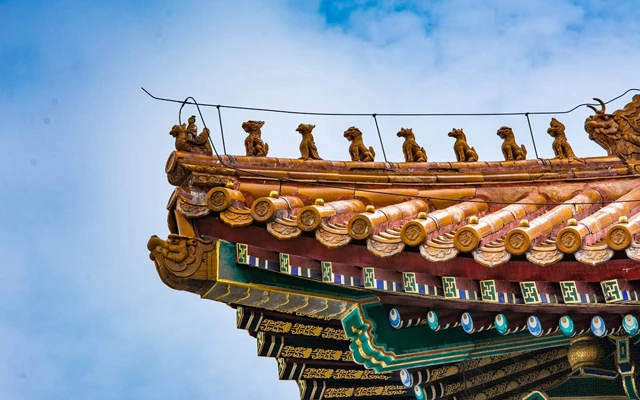
Beijing Forbidden City
Chinese architecture is understood as a style of architecture that has taken shape in East Asia over many centuries, which is shared with neighboring countries. The structural principles of Chinese architecture have remained virtually unchanged, with the main changes occurring in the decorative arts and its constructions are based on deep cultural traditions highlighting the ideology of the superiority of imperial power and its compact class system.
Characteristics of Chinese art
● Simplicity and elegance, no detail is made just because, everything is essential and seeks a balanced, rhythmic form of objects.
● The works of Chinese art are endowed with sensitivities and try to integrate the senses to enjoy their art.
● In Chinese art, it can be seen in architecture, painting, ceramics, and sculpture.
● It has had a more uniform evolution than in the West and always marked by the dynasty that reigned at the time and therefore of Chinese culture.
● One of the essential principles of Chinese art is the synthesis between the artistic creative spirit and the social and hierarchical function to which they were destined from their conception.
● The exquisiteness of the forms, at the origin of the decorative themes.
● The themes are chosen to dignify the power were the great real and mythological animals, and the representation of the social classes - literate, military, foreigners.
● The polychrome murals that appear in traditional buildings, with their wide variety of motifs and themes, have a decorative and symbolic value at the same time. They depict dragons, phoenixes, myths, landscapes, floral motifs, birds, etc.
Dynasties of Chinese art
In the history of Chinese art, we can highlight several dynasties that are a reflection of the evolution we have mentioned above. Among these dynasties we can highlight:
Shang Dynasty: this dynasty began in 1600 and lasted until 1046 BC. It stood out for all its sculptures and objects that were created with bronze, especially the decorated vessels. All that has been found of these dynasties are some archaeological remains in several places in Henan, in addition to some tombs with weapons, jewelry, and various utensils created with different materials such as jade, bronze, and ivory.
The first manifestations of Chinese calligraphy are found on bones belonging to the Bronze Age, during the Shang dynasty, making signs as a Chinese writing system that do not represent sounds but concepts. That is to say, the sign has a conceptual nature, of meaning and is not directly related to the sound.
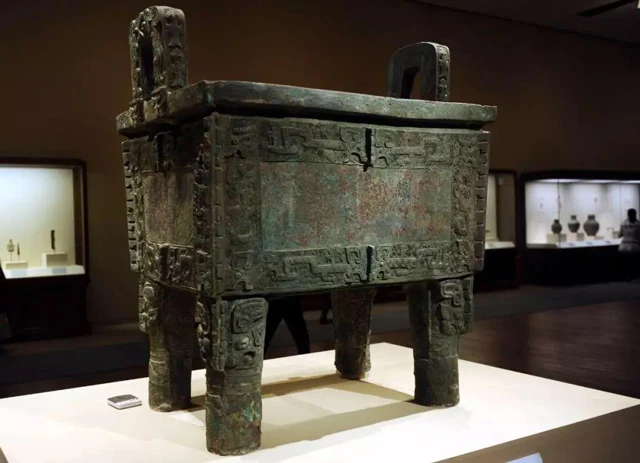
Shang Dynasty - Houmuwu ding
Zhou Dynasty: this dynasty began in 1045 and lasted until 256 B.C. Little by little the art evolved and in the Zhou dynasty, an ornate and decorative style was created. It was characterized by dynamic and stylized figures. However, the most used material was still copper, but a new material called "lacquer" appeared.
Qin Dynasty: this dynasty began in 221 and lasted until 206 B.C. In this dynasty, the whole of China was unified and the famous Great Wall was built. The highlights of this dynasty are the various terracotta statues.
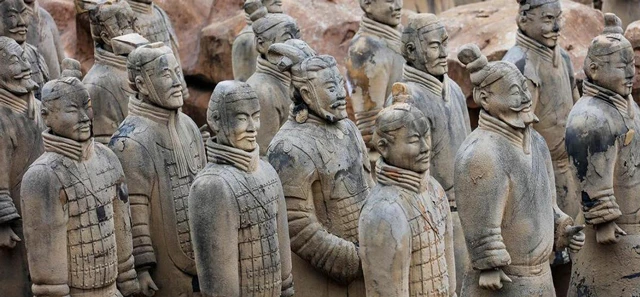
Terracotta Army
Han Dynasty: this dynasty began in 206 BC and lasted until 220 AD. This dynasty stood out because it was a great time of prosperity and peace and where Buddhism was introduced. The most outstanding when talking about art was the funeral chapels, the winged statues such as horses, tigers, and lions. As for painting, it was centered on themes of the imperial courts. In this dynasty, paper was invented, made with a mixture of bamboo fibers, tree bark, and water. The stone sculpture began as a majestic and representative decoration of the funeral roads of the imperial tombs in this dynasty.
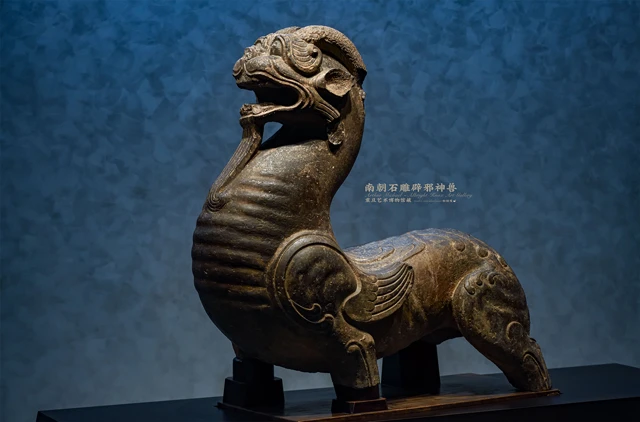
Han Dynasty Stone Sculpture
Tang Dynasty: This dynasty began in 618 and lasted until 907 AD. C. Possibly this was the most evolutionary stage of Chinese art and therefore what stood out most in this period was ceramics and sculpture. Its most outstanding work was possibly the statue of Buddha. When it comes to painting, the landscape was integrated into it and in architecture, a new typology called pagoda was introduced. The first true porcelain was produced during the Tang Dynasty, when Chinese potters learned to control the iron content which reduced color interference, resulting in whiteness.
During the first half of the Tang Dynasty, landscape and paintings depicting flowers and birds were the most commonly used themes, paintings with mountains, forests, fields, and gardens allow us to escape from this world and penetrate into the realm of peace and tranquility.

Tang Dynasty Paintings - Lady Guoguo's Spring Outing
Trees, stones, meadows, flowers, birds, and other animals that appear in the paintings, endowed with great liveliness and energy, are also much admired. Thus, the three main categories of traditional Chinese painting would be landscape, flowers, and birds along with depictions of human figures during the early Tang Dynasty.
Song Dynasty: this dynasty began in 960 and lasted until 1279 AD. In this period a high level of culture was reached and with this high level, wood engraving was developed. In terms of architecture, it continued with the construction of pagodas and in terms of painting, two styles were distinguished, the northern and the southern.
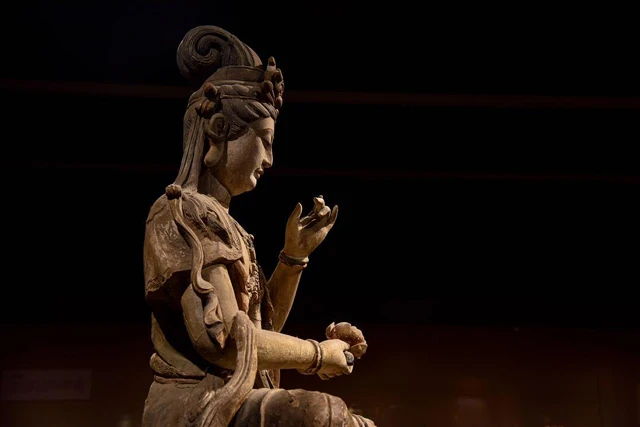
Song Dynasty Wood Carving
Yuan Dynasty: this dynasty began in 1280 and lasted until 1368 AD. This dynasty has a Mongol origin since China moved much more towards the West. The highlight of this dynasty was the White Pagoda in Beijing. In addition, new decorative arts appeared, and religious themes were introduced in painting, among the most outstanding were Buddhist and Taoist themes.
Ming Dynasty: this dynasty began in 1368 and lasted until 1644 AD. This dynasty was a great restoration of the Mongolian period and with it, the traditions of ancient Chinese art were taken up again. The highlight of this dynasty was the change in painting, which became more naturalistic.
In addition, new material was developed: porcelain. Within the decorative arts, we can highlight the Ming furniture that stood out for its simple, uniform line, without breaks, and for its sparing and elegant decoration, all of which tends to enhance its magnificent construction characteristics.
Outstanding works of Chinese art
The oldest finds, from Yang-Chao in northern Honan, date from between the 19th and 17th centuries B.C. and have yielded pottery with geometric painted decoration, as well as bone or flint knives and jade axes.
The pottery found in the Panchan region, in Kansu, with splendid polychrome ornamentation of spirals, scrolls, and lozenges.
In the Anyang region, corresponding to the second of the semi-mythical dynasties, that of the Shang (about 1,500 years B.C.), they found pottery made of white vessels, of very refined shape, and with molded ornamentation.
